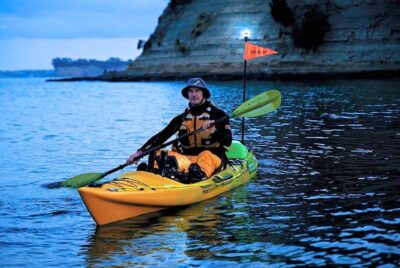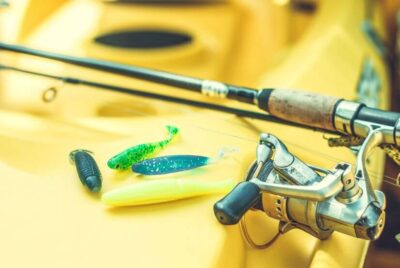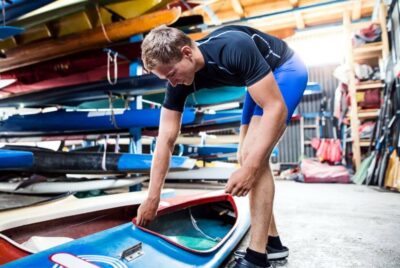The Thrills of Whitewater Kayaking: From Rapids to Gear
If you’re in search of your next adrenaline-pumping experience, you’ve come to the right place. Whether you’re a seasoned kayaker or a complete newbie, today we’re diving head-first into a topic that’s sure to make your heart race—whitewater kayaking. So sit back, relax, and let’s navigate these roaring rapids together!
What Is Whitewater Kayaking?
Whitewater kayaking involves navigating a specialized kayak through turbulent river waters filled with obstacles like rocks, drops, and all kinds of challenging rapids. Imagine a roller coaster, but one where you have the steering wheel. The adrenaline rush comes from successfully steering through the complex, fast-paced water currents while also maintaining your balance and keeping an eye out for what’s coming next. It’s a dance with nature, a test of skill and nerve.
Getting Started with Whitewater Kayaking
Alright, my adrenaline-fueled friend, you’ve been wooed by the siren call of the rapids and you’re ready to take the plunge—literally. But before we get you into the water, there are a few essentials we need to cover. You wouldn’t go into a battle without armor and a sword, would you? Likewise, whitewater kayaking requires its own set of “armor and weapons.”
Necessary Equipment
Kayak Types
Choosing the right kayak is a bit like choosing the right pair of running shoes. Just as you wouldn’t wear flip-flops for a marathon, you wouldn’t want to choose the wrong kayak for your whitewater journey. The type of kayak you choose will shape your kayaking experience, affecting everything from maneuverability to speed and stability. Here’s a deeper look at each type:
Playboats
If you’re the type of person who loves doing flips on a trampoline or tearing up the skate park, the Playboat might just be your aquatic soulmate. These kayaks are the shortest and most agile in the whitewater category.
- Maneuverability: Exceptional. These kayaks can turn on a dime, making it easier to navigate tight spots and perform tricks.
- For Tricks and Rolls: Perfect for mastering maneuvers like spins, flips, and rolls.
- Not for Long Distances: Due to their short length, playboats aren’t built for speed or long-distance paddling.
- Who’s it for: Ideal for thrill-seekers who love showing off their skills and aren’t afraid of a challenge.

River Runners
If you’re a generalist, someone who loves a little bit of everything life has to offer, then River Runners are your jam. These are the Swiss Army knives of the kayaking world—versatile, dependable, and up for almost anything.
- Balance and Speed: These kayaks are longer than playboats but shorter than creek boats, giving you a good balance of speed and maneuverability.
- Stable but Agile: Great for beginners and intermediates, river runners are stable enough to give you confidence but agile enough to keep things exciting.
- Versatile: Perfect for a range of whitewater conditions—from small rapids to moderate drops.
- Who’s it for: Suited for paddlers who want a well-rounded experience, who are perhaps new to whitewater kayaking but keen to try a little bit of everything.
Creek Boats
Let’s say you’re the adventurous type who loves off-roading. In that case, Creek Boats are your whitewater equivalent of a rugged, four-wheel-drive vehicle.
- Built for Tough Conditions: These are the kayaks you want for tackling high-volume rapids, steep drops, and technical courses.
- Speed and Stability: Generally longer and with more volume, creek boats are designed to be fast and extremely stable.
- Safety Features: Many come with reinforced hulls and additional safety features like grab handles and safety bars.
- Who’s it for: Experienced paddlers looking for a high-adrenaline experience, capable of handling extreme and unpredictable conditions.
Paddles
Think of your paddle as an extension of your own body. It’s the tool that connects you to the water, allowing you to execute precise movements and maneuvers. Choose wisely, and you’ll feel like a wizard weaving spells; choose poorly, and you’ll find yourself struggling against the rapids. Here’s what to consider:
Straight Shaft vs. Bent Shaft
When you’re starting, this might seem like a minor detail, but the shaft design can greatly impact your paddling comfort and efficiency.
- Straight Shaft: This is your traditional, no-frills design.
- Simplicity: Easy to use, especially for beginners.
- Affordability: Generally cheaper than bent-shaft paddles.
- Versatility: Good for various types of kayaking, not just whitewater.
- Bent Shaft: These are like the ergonomic office chairs of the paddle world.
- Reduced Wrist Strain: The bent shape allows for a more natural hand and wrist position.
- Efficiency: Many kayakers find that they can paddle more powerfully and efficiently with bent shafts.
- Learning Curve: It can take a bit of time to get used to the different grip positions.
Material
Just like you wouldn’t build a house with weak bricks, the material of your paddle plays a crucial role.
- Carbon Fiber: The high-end choice.
- Lightweight: Makes for less arm fatigue.
- Stiffness: Offers efficient power transfer with each stroke.
- Pricey: The best quality comes at a cost.
- Fiberglass: The middle-of-the-road option.
- Good Balance: Lighter than plastic but less stiff than carbon.
- Colorful Designs: Often comes in vibrant colors and patterns.
- Plastic/Aluminum: For those on a budget or just starting.
- Durable: Can take a beating and keep on ticking.
- Heavier: Not ideal for long paddling sessions.
Blade Shape and Size
This is where the rubber meets the road, or in our case, where the paddle meets the water.
- Wider Blades: More surface area means more power but also requires more effort.
- Narrower Blades: Easier on your body for long trips but might not offer the quick bursts of speed or power you need for intense rapids.
- Asymmetrical vs. Symmetrical: Asymmetrical blades are more common in whitewater kayaking for their efficiency in angled strokes.
Safety Gear
Now, onto the “armor” part—your safety gear. This is non-negotiable, folks. You wouldn’t skydive without a parachute, would you?
- Helmet: This is your crown jewel of safety, meant to protect your head from rocks, falls, and other potential dangers. Look for a snug fit and make sure it’s designed for water sports.
- Life Vest/PFD (Personal Flotation Device): This keeps you afloat during unintentional swims and helps you conserve energy in the water. Make sure it fits snugly and doesn’t obstruct your range of motion.
- Spray Skirt: This nifty piece of equipment keeps the water out of your kayak, essentially sealing the gap between you and the kayak’s cockpit.
- Throw Rope: A throw rope is essential for group paddling, allowing you to assist in rescues or get help when needed.

Basic Skills to Learn
Whitewater kayaking is like dancing with the river—you lead at times, the river leads at others, but most importantly, you must be in sync. Whether you’re a total newbie or you’ve had a bit of flat-water kayaking experience, there are some specific techniques you need to master for the dynamic environment of a rushing river.
Paddling Techniques
Hold onto your paddles, folks, because we’re about to break down the techniques that will turn you into a water wizard.
Forward Stroke
The bread and butter of kayaking. This is your go-to move for propelling yourself forward.
- Rotation: Rotate your torso, not just your arms, to engage more muscles and reduce fatigue.
- Catch: Submerge the blade fully into the water at your feet.
- Exit: Release the blade when it’s aligned with your hips.
Sweep Stroke
When you want to make a dramatic turn, the sweep stroke is your best friend.
- Full Sweep: Extend one paddle blade outwards and make a wide, sweeping motion.
- Close to the Boat: Keep the paddle closer to the kayak for a smaller turning radius.
Brace Stroke
The unsung hero that can keep you from capsizing.
- High Brace: Upper body leans slightly forward, paddle almost touching the water’s surface.
- Low Brace: The paddle is low and close to the water, ready to provide support.
Draw Stroke
Need to move sideways? The draw stroke is your answer.
- Reach Out: Extend the paddle blade out to the side, parallel to the kayak.
- Draw In: Pull the water towards you, effectively moving the kayak sideways.
Navigating Rapids
Alright thrill-seekers, navigating rapids is where the fun really kicks in. But don’t take it lightly; understanding how to read and react to rapids is crucial for both your safety and enjoyment.
Reading Rapids
- High and Dry: Before you even get in the water, scout the rapids from a high vantage point.
- Observe Flow Patterns: Look for channels where the water is flowing freely, avoiding rocks and other obstacles.
Eddies
- What Are They?: Eddies are calm spots behind obstacles where water flows upstream.
- Why Use Them?: They serve as resting points and also make great spots for entering and exiting rapids.
Breaking In and Out
- Breaking In: As you approach an eddy, angle your kayak so that you hit the eddy line (the boundary between the rapid and the eddy) at about a 45-degree angle.
- Breaking Out: To re-enter the rapid, paddle up to the top of the eddy and slice your bow through the eddy line, leaning slightly downstream.
Ferrying
- Going Sideways: Sometimes, you’ll want to cross a rapid without being carried downstream. To do this, you’ll point your bow slightly upstream and paddle forward, using the current to carry you sideways.
Choosing the Perfect River
Imagine you’re picking out a new video game. You wouldn’t jump straight to the boss level, would you? Well, rivers have levels too—ranging from the equivalent of a peaceful stroll through a garden to an adrenaline-pumping race down a mountain. Here’s how to pick the river that suits your skills and cravings for adventure.
River Classification System
First: understanding the rating system. Rivers are classified into six different grades, ranging from Class I (easiest) to Class VI (experts only, please). Knowing these classifications will help you make an informed decision, ensuring both fun and safety.
Class I-II: Beginner
Think of Class I and II rivers as the kiddie pools of whitewater kayaking.
Characteristics:
- Class I: Smooth water, maybe some small waves. Think of it as the ‘tutorial level.’
- Class II: A bit more action. Expect small rapids and some easy obstacles.
Why Choose This?
- Ideal for practicing basic skills.
- Low risk, but enough fun to get you hooked.
Who’s It For?
- Beginners or those looking for a more relaxed kayaking experience.
Class III-IV: Intermediate
Welcome to the intermediate leagues! This is where things start to get interesting.
Characteristics:
- Class III: Expect moderate rapids, possibly some larger waves, and obstacles that require skillful maneuvering.
- Class IV: Hold on tight; these are intense rapids that require precise boat control.
Why Choose This?
- Perfect if you’re looking to elevate your skills.
- Offers a balanced blend of adrenaline and complexity.
Who’s It For?
- Those who have mastered the basics and are ready for a new challenge.

Class V-VI: Expert
The “big leagues,” the zenith, the pinnacle! You get the idea.
Characteristics:
- Class V: Serious business. Complex rapids, high volume, and the possibility of significant hazards.
- Class VI: Basically, the “final bosses” of whitewater kayaking. These are almost unavoidable and should only be attempted by pros.
Why Choose This?
- For the unparalleled adrenaline rush and extreme challenge.
- You’re testing your skills against some of the toughest natural challenges.
Who’s It For?
- Highly experienced kayakers only. If you have to ask if you’re ready, you’re probably not.
Seasonal Considerations
Would you wear a swimsuit to a ski resort in winter? Probably not. Similarly, different seasons offer vastly different whitewater kayaking experiences. Let’s unpack what each season brings to the table so you can plan your adventure accordingly.
Spring
Ah, spring, when snowmelt transforms rivers into whitewater wonderlands.
Pros:
- High water levels usually mean more rapids and more excitement.
- Great for intermediate to expert kayakers looking for a challenge.
Cons:
- Cold water temperatures can be a shock to the system.
- Fast-flowing water isn’t ideal for beginners.
What to Wear:
- Thermal layers and a quality drysuit are must-haves.
Summer
Summer’s warm weather draws in lots of kayakers, from beginners to experts.
Pros:
- Warmer water temperatures make for a more comfortable experience.
- River levels are generally more predictable.
Cons:
- Popular rivers can get crowded.
- Lower water levels may mean fewer rapids.
What to Wear:
- A wetsuit or even just a swimsuit and rash guard could suffice, depending on the river.
Fall
The crowds have thinned, and the rivers are waiting for you.
Pros:
- Less crowded than in summer.
- Beautiful foliage can make for a scenic ride.
Cons:
- Falling leaves can create unforeseen obstacles.
- Water levels start to drop.
What to Wear:
- Layering is key. Think drysuits with thermal layers.
Winter
For the hardcore among us, winter kayaking is a thing. But it’s not for the faint of heart.
Pros:
- You’ll have the river all to yourself.
- Crisp, clear days can be magical.
Cons:
- Cold, cold, and more cold. Hypothermia is a real risk.
- Many rapids may be frozen or unnavigable.
What to Wear:
- A high-quality drysuit with thermal layers is non-negotiable.
Keeping Safety in Mind
Imagine driving a race car without a seatbelt. Thrilling? Absolutely. Safe? Not by a long shot. Similarly, whitewater kayaking is an adrenaline-pumping activity, but it’s not without its risks. Like a seatbelt in a race car, proper safety measures are non-negotiable.
Common Dangers and How to Avoid Them
Let’s face it, every sport has its hazards, and whitewater kayaking is no exception. But awareness and preparedness can be your best allies. Here’s a rundown of common dangers and how to avoid ending up in a tight spot.
Strainers
- What Are They?: These are objects like fallen trees or branches that water can pass through but you can’t.
- How to Avoid: Always scout ahead and be aware of your surroundings. If you see a strainer, navigate well clear of it.
Undercuts
- What Are They?: Undercuts are rocks or obstacles where the current flows underneath. They can trap you if you’re not careful.
- How to Avoid: Just like with strainers, scouting, and situational awareness are key. Steer clear if you spot any.
Foot Entrapment
- What Is It?: If you capsize and put your feet down, the river’s current can pin you underwater.
- How to Avoid: Never stand up in fast-moving water. If you capsize, keep your feet elevated and aimed downstream.
Hypothermia
- What Is It?: Prolonged exposure to cold water can lower your body temperature, leading to hypothermia.
- How to Avoid: Always wear appropriate clothing like a drysuit or wetsuit, and carry a change of clothes in a waterproof bag.
Poor Equipment
- What Is It?: Using subpar or incorrect gear can increase the risk of accidents.
- How to Avoid: Always double-check your equipment before heading out. Make sure it’s in good condition and suitable for your skill level and the river’s classification.
Conclusion
Whitewater kayaking isn’t just a sport—it’s an experience, an adventure, and for some of us, a way of life. From choosing the right equipment and mastering the basics to selecting the perfect river based on skill level and season, there’s a lot to consider. But don’t be daunted; every expert was once a beginner. Safety, as we’ve emphasized, should be your constant companion on every splash-filled escapade. Think of this guide as your personal roadmap to whitewater kayaking bliss. Gear up, practice hard, and above all, respect the river.
FAQs
Q: Can I go whitewater kayaking if I can’t swim?
A: While it’s technically possible with the right safety gear and supervision, it’s highly discouraged. Knowing how to swim adds an essential layer of safety. So, take those swimming lessons before you hit the rapids.
Q: Is a sit-on-top kayak suitable for whitewater kayaking?
A: Generally, no. Sit-on-top kayaks are great for flat water, but they lack the control and safety features needed for navigating rapids. Opt for a specialized whitewater kayak instead.
Q: How do I know what class of rapids is right for me?
A: Start by assessing your skill level and comfort with previous kayaking experiences, if any. For beginners, Class I and II rapids are recommended. Intermediate kayakers can go for Class III and IV, while experts can consider Class V and VI.
Q: What’s the best time of year for whitewater kayaking?
A: It depends on what you’re looking for. Spring offers high water levels and challenges, summer brings warmer water and more predictability, fall offers solitude and scenery, and winter is for hardcore enthusiasts who can handle the cold.
Q: How do I ‘read’ a river?
A: Reading a river involves understanding its features, like eddies, waves, and obstacles, to navigate safely and effectively. It’s a skill gained through experience and possibly guided instruction. Always scout the river ahead and consult maps or local experts if possible.





